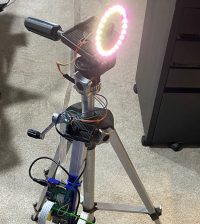- makeITcircular 2024 content launched – Part of Maker Faire Rome 2024Posted 2 weeks ago
- Application For Maker Faire Rome 2024: Deadline June 20thPosted 2 months ago
- Building a 3D Digital Clock with ArduinoPosted 7 months ago
- Creating a controller for Minecraft with realistic body movements using ArduinoPosted 7 months ago
- Snowflake with ArduinoPosted 8 months ago
- Holographic Christmas TreePosted 8 months ago
- Segstick: Build Your Own Self-Balancing Vehicle in Just 2 Days with ArduinoPosted 8 months ago
- ZSWatch: An Open-Source Smartwatch Project Based on the Zephyr Operating SystemPosted 9 months ago
- What is IoT and which devices to usePosted 9 months ago
- Maker Faire Rome Unveils Thrilling “Padel Smash Future” Pavilion for Sports EnthusiastsPosted 10 months ago
Tivoli Squeezebox Radio: it looks so cute!

If you are an audiophile enthusiast, I think you could really appreciate this project.
The maker had a clear idea of what the radio should have been, he wanted something modern but with a classic stylish case.
These were the major components, but in addition there’s also a lot of “small” stuff that’s needed to make the whole thing work. Here’s an overview and a description of the components:
• The Tivoli Speaker;
• Raspberry Pi zero;
• HiFiBerry mini amp;
• the rotary encoder and knob;
• a USB-Wifi adapter with external antenna. The Pi zero doesn’t have any network hardware on board, so you need an external WiFi dongle. I wanted really good reception, and the housing of the radio significantly shielded the signal, so I used an external antenna and needed an additional antenna cable to connect the WiFi dongle;
• a 12V step-up converter. One thing that was still running on 12V, albeit on very low power (10mA), was the alarm clock. To supply this, I used a USB-to-12V step-up converter (a small dongle). Those devices are a bit critical to use with anything that draws significant power since they are not very efficient and can get really hot, but fortunately the alarm clock only has a very low power draw so it was not a problem in this case. I removed the output connector and replaced it with a pin-connector directly soldered to the alarm clock board.
• USB cables. Several. The Pi zero has micro-USB connectors for power and USB bus (here used for WiFi), so I needed USB-to-micro-USB adapter cables to connect the power bank and the WiFi dongle. The cable to the power bank isn’t directly connected but leads to a switch first which switches the 5V line to provide hard power on/off capability.
To connect external power, I used a USB-B connector (the one used in printers) I mounted into the back of the radio because it’s much easier to plug/unplug than micro-USB. That connector then connects to the micro-USB charging input of the power bank.
A long USB-A-to-B cable (“USB printer cable”) is used to connect the radio to the power supply.
• Power supply. A standard 2A USB power supply.
• Power switch. Connects to the power-bank-to-Raspberry-Pi connection cable and switches the 5V line.
• Boards, pin connectors and wires to connect all of the components.
• A micro-SD card for the operating system and software.
Click here for further informations.















